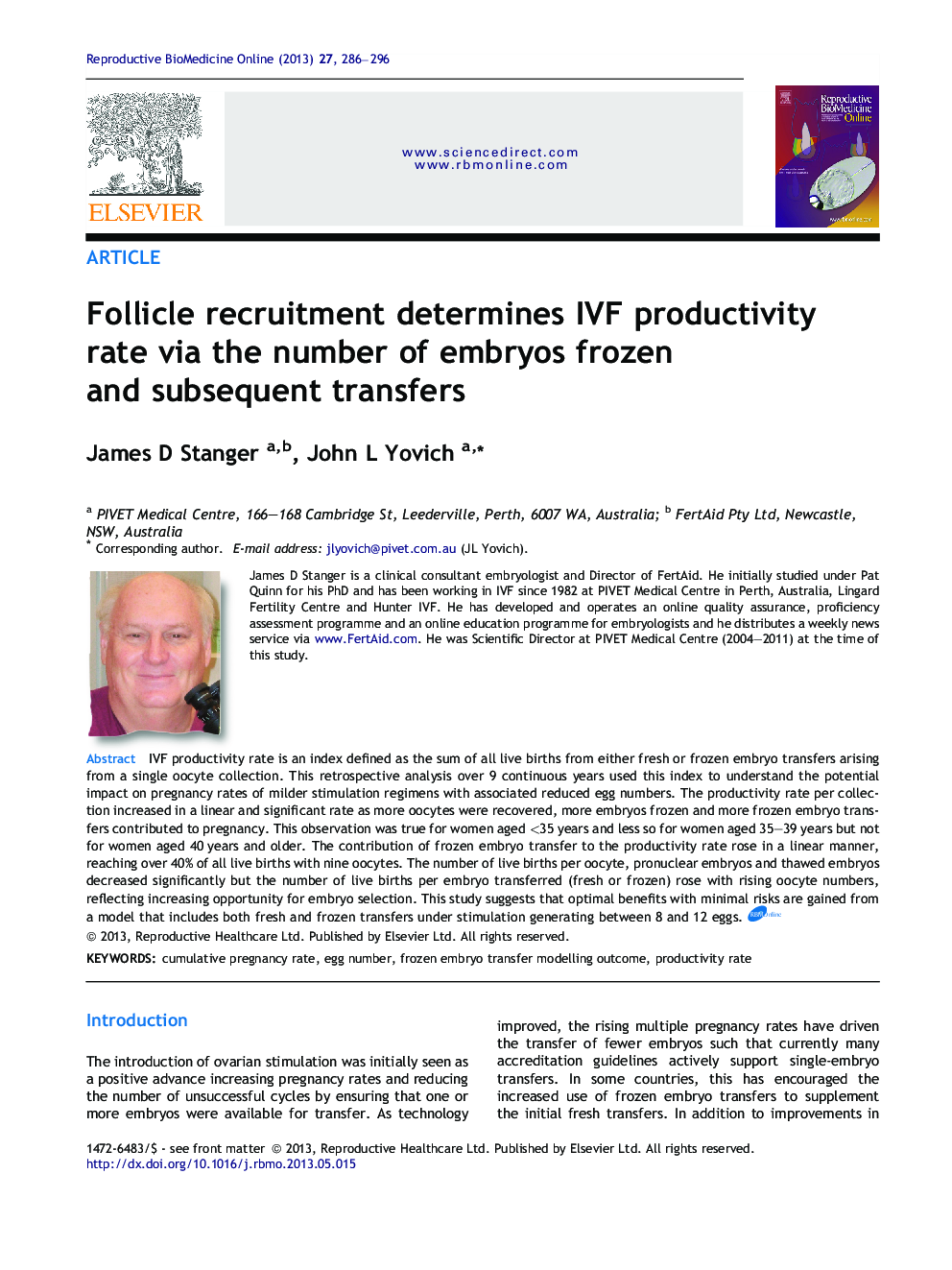| Article ID | Journal | Published Year | Pages | File Type |
|---|---|---|---|---|
| 3970571 | Reproductive BioMedicine Online | 2013 | 11 Pages |
Abstract
Most of the costs and risks associated with an IVF cycle occur during the stimulation, egg collection and subsequent transfer of fresh embryos and ignore or treat separately the outcome from any subsequent frozen embryo transfers. We have used the term 'productivity rate' (or cumulative pregnancy rate per collection cycle) that includes outcomes from both fresh and frozen transfers as a tool to explore the impact of oocyte numbers on the ultimate chance of pregnancy. While the pregnancy rate for individual fresh and frozen transfers were largely unrelated to oocyte numbers, the cumulative chance of pregnancy rose significantly with the number of oocytes recovered. This was due to the increasing contribution of frozen embryo transfers to the overall chance of pregnancy producing more than half of all pregnancies above five oocytes. While the fertilization rate and embryo quality was independent of egg numbers, increasingly more embryos needed to be used to generate sufficient good-quality embryos for transfers as the egg numbers rose. The study found that 8-12 oocytes provided the highest cumulative chance of pregnancy with the least risk of either failed fertilization or ovarian hyperstimulation syndrome and this range could be used as a target number for individualized stimulation regimens.
Keywords
Related Topics
Health Sciences
Medicine and Dentistry
Obstetrics, Gynecology and Women's Health
Authors
James D. Stanger, John L. Yovich,
